
The Enchanting Mont Saint-Michel Bay
Discover the mystical allure of Mont Saint-Michel Bay, where tides reveal a magical island and medieval history comes alive in Normandy, France.
Mont Saint-Michel Bay, located in Normandy, France, is one of the most magical places you can visit. This stunning bay is home to the famous Mont Saint-Michel, a tiny rocky island topped with a medieval abbey. The site is a UNESCO World Heritage site and attracts millions of visitors each year. The bay itself is a marvel, with its vast tidal range creating a dramatic landscape that changes with the ebb and flow of the tides. During low tide, you can walk across the sandy flats to the island, while high tide turns Mont Saint-Michel into a striking island fortress. The views from the top of the abbey are breathtaking and offer a panoramic vista of the surrounding bay and coastline. Besides the abbey, the village of Mont Saint-Michel is a charming place to explore. Narrow cobblestone streets, quaint shops, and cozy cafes offer a glimpse into medieval life. Visitors can also enjoy local cuisine, including the famous omelets at La Mère Poulard and fresh seafood from the bay.
Local tips in Mont Saint-Michel Bay
- Check the tide schedule before visiting to experience both the island and the bay.
- Wear comfortable shoes for walking on the cobblestone streets and sandy flats.
- Visit early in the morning or late in the afternoon to avoid the crowds.
- Try the local specialties like La Mère Poulard's omelets and fresh seafood from the bay.
- Consider taking a guided tour to learn about the rich history and legends of Mont Saint-Michel.
The Enchanting Mont Saint-Michel Bay
Mont Saint-Michel Bay, located in Normandy, France, is one of the most magical places you can visit. This stunning bay is home to the famous Mont Saint-Michel, a tiny rocky island topped with a medieval abbey. The site is a UNESCO World Heritage site and attracts millions of visitors each year. The bay itself is a marvel, with its vast tidal range creating a dramatic landscape that changes with the ebb and flow of the tides. During low tide, you can walk across the sandy flats to the island, while high tide turns Mont Saint-Michel into a striking island fortress. The views from the top of the abbey are breathtaking and offer a panoramic vista of the surrounding bay and coastline. Besides the abbey, the village of Mont Saint-Michel is a charming place to explore. Narrow cobblestone streets, quaint shops, and cozy cafes offer a glimpse into medieval life. Visitors can also enjoy local cuisine, including the famous omelets at La Mère Poulard and fresh seafood from the bay.
When is the best time to go to Mont Saint-Michel Bay?
Iconic landmarks you can’t miss
Mont Saint-Michel
Discover the breathtaking beauty and rich history of Mont Saint-Michel, a UNESCO World Heritage site and a must-visit destination in Normandy, France.
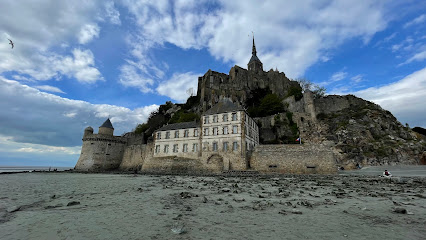
Tour du Nord
Explore the architectural splendor of Tour du Nord, a historical landmark in Mont Saint-Michel, where beauty and history intertwine in breathtaking harmony.
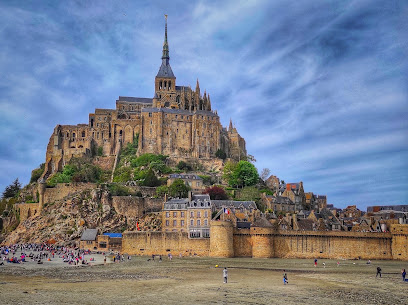
The Center for National Monuments
Discover the Center for National Monuments in Mont Saint-Michel, a historical treasure showcasing France's architectural legacy and cultural significance.
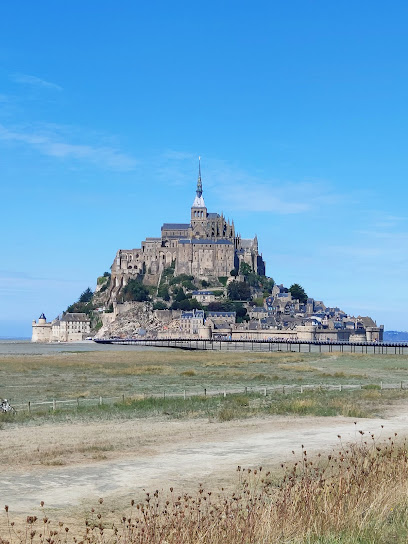
Porte de l'avancée
Discover the enchanting Porte de l'avancée, a historic gateway to Mont Saint-Michel's rich medieval charm and stunning landscapes.
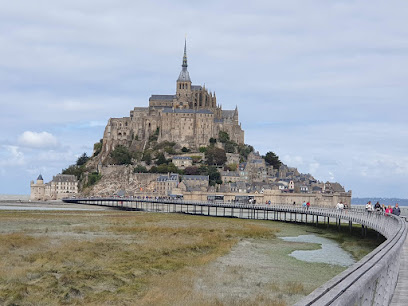
Tour Gabriel
Explore the historical wonders of Tour Gabriel at Mont Saint-Michel, where architectural beauty meets rich heritage and breathtaking views.
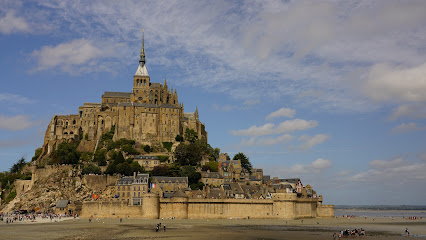
Unmissable attractions to see
Port de Dinan
Explore the picturesque Port de Dinan, a charming marina in Brittany with stunning views, delightful cuisine, and rich history.
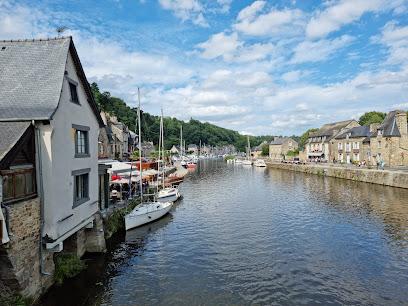
Moulin de Moidrey
Uncover the beauty and history of Moulin de Moidrey, a cultural landmark near Mont Saint-Michel, where tradition meets picturesque scenery.
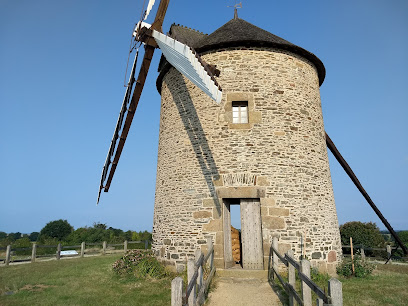
Barrage du Mont Saint Michel
Discover the stunning Barrage du Mont Saint Michel, a blend of natural beauty and engineering marvel with breathtaking views of the iconic abbey.
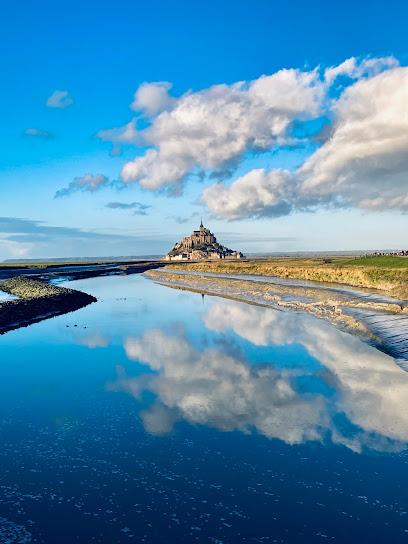
Le Train Marin
Experience the charm of Le Train Marin in Cherrueix, where scenic train rides meet the stunning beauty of the French coastline.
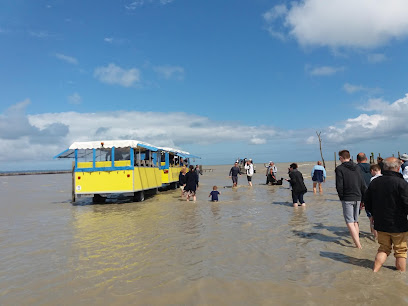
Écomusée de la Baie du Mont-Saint-Michel
Uncover the cultural and ecological treasures of the Bay of Mont-Saint-Michel at the Écomusée, where history and nature intertwine.
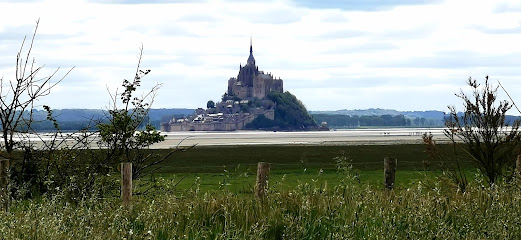
François LAMOTTE d'ARGY Guide de la baie du Mont-Saint-Michel
Experience the breathtaking beauty and rich history of Mont-Saint-Michel with expert guide François Lamotte d'Argy for an unforgettable adventure.
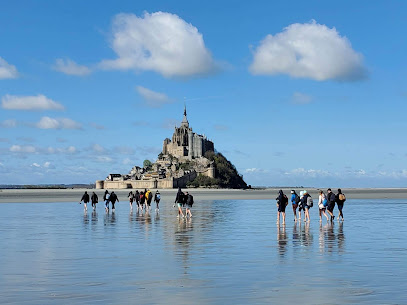
Roche torin
Experience the breathtaking views and serene beauty of Roche Torin, a must-visit tourist attraction in Courtils, France, perfect for nature lovers.

Archéoscope
Explore the rich history of Mont Saint-Michel at Archéoscope, a captivating museum bringing the past to life through engaging exhibits and multimedia presentations.
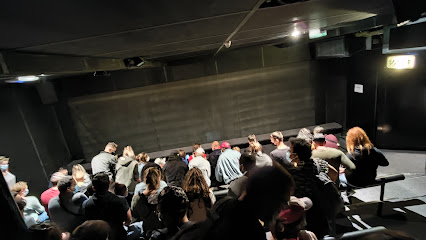
Baie du Mont St.Michel
Explore the breathtaking beauty and rich history of Baie du Mont St. Michel, a UNESCO World Heritage site in Normandy, France.
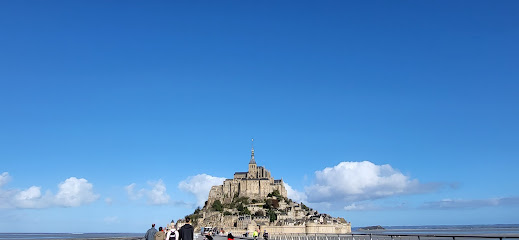
Tour Gabriel
Explore the historical marvel of Tour Gabriel at Mont Saint-Michel, where stunning views and rich heritage await every visitor.
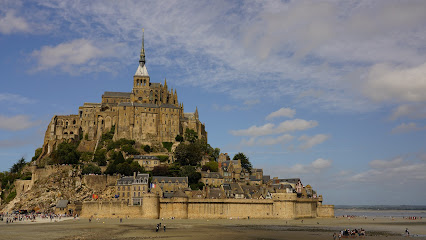
Maison des Polders
Discover the rich cultural heritage of Brittany at Maison des Polders, an engaging museum in Roz-sur-Couesnon showcasing local traditions and history.
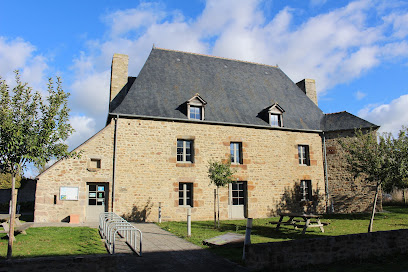
The King's Gate
Discover unique souvenirs and local treasures at The King's Gate, the charming gift shop in the heart of Mont-Saint-Michel's historical wonder.
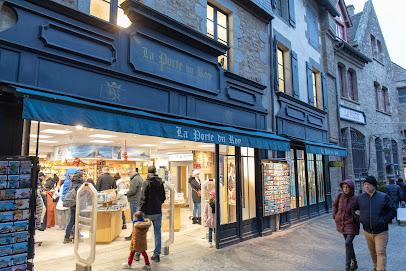
Best View Mont Sant Michell
Discover the enchanting beauty of Mont Saint-Michel, a UNESCO World Heritage site, where medieval architecture meets stunning coastal views.
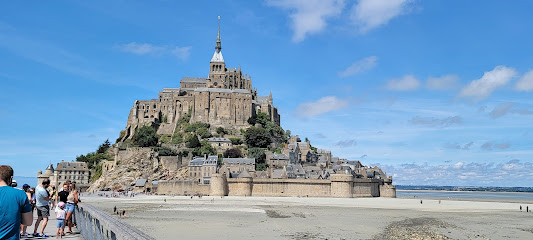
Digue du Sillon
Discover the Digue du Sillon in Saint-Malo: A breathtaking coastal promenade with rich history and stunning views of the Atlantic Ocean.
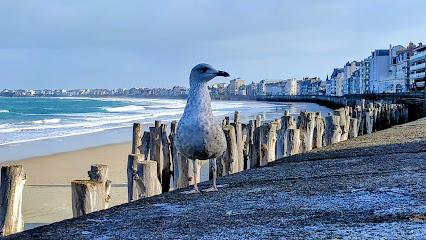
Le Mont Saint Michel panorama
Explore the stunning panoramic views of Le Mont Saint Michel, a UNESCO World Heritage site, perfect for hiking and photography enthusiasts.

Essential places to dine
Hotel La Mère Poulard
Indulge in exquisite French cuisine at Hotel La Mère Poulard on Mont-Saint-Michel—where history meets culinary artistry.
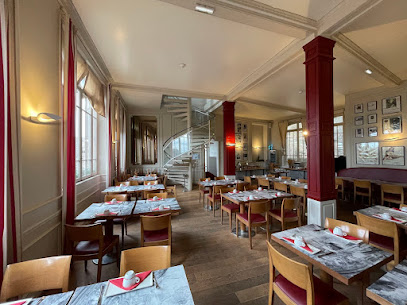
LES TERRASSES DE LA BAIE
Experience exquisite dining at Les Terrasses de la Baie with stunning views of Mont Saint-Michel's iconic landscape.
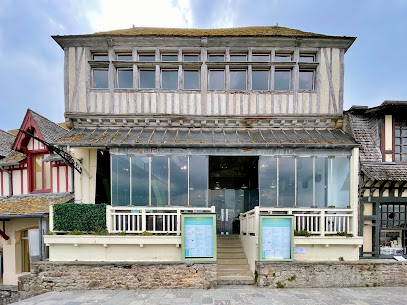
Restaurant La Confiance
Discover exquisite French cuisine at Restaurant La Confiance in Mont Saint-Michel—where tradition meets breathtaking views.
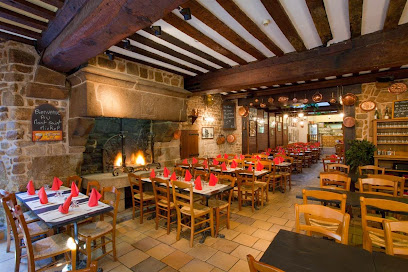
Restaurant La Salicorne ( ex: La Rôtisserie)
Discover the authentic taste of France at Restaurant La Salicorne near Mont Saint-Michel, where culinary excellence meets stunning scenery.
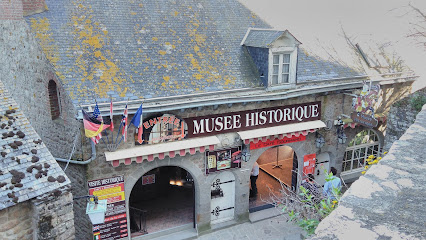
Restaurant La Fermette
Experience authentic French cuisine at Restaurant La Fermette in Beauvoir – where local flavors meet rustic charm.
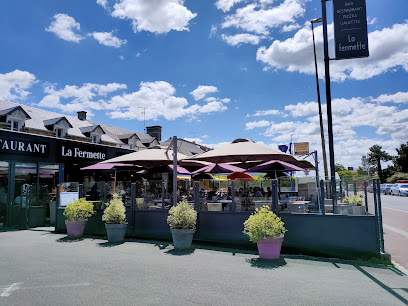
Restaurant de la Galette
Experience authentic French cuisine at Restaurant de la Galette near Mont Saint-Michel - where flavor meets tradition.
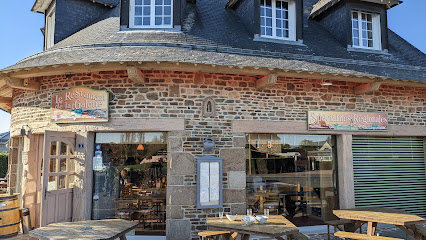
La Sirène Lochet
Discover authentic Breton cuisine at La Sirène Lochet in Mont Saint-Michel - home of exquisite crêpes and charming ambiance.
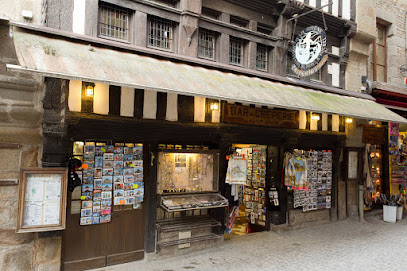
Auberge Saint Pierre
Experience comfort and tradition at Auberge Saint Pierre, your gateway to exploring the stunning Mont Saint-Michel.

Restaurant Le Pré Salé
Experience exquisite French cuisine at Restaurant Le Pré Salé near Mont Saint-Michel - A culinary gem amidst breathtaking landscapes.

La Ferme Saint-Michel
Experience authentic French cuisine at La Ferme Saint-Michel near Mont Saint-Michel - where tradition meets breathtaking views.
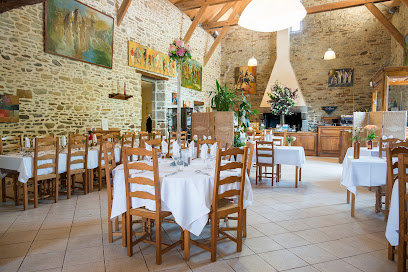
La Vieille Auberge Mont Saint-Michel
Experience traditional French cuisine at La Vieille Auberge Mont Saint-Michel amidst breathtaking historical scenery.

Le Bisqu'in
Discover exquisite French and seafood cuisine at Le Bisqu'in near Mont Saint-Michel - a must-visit culinary destination for every traveler.
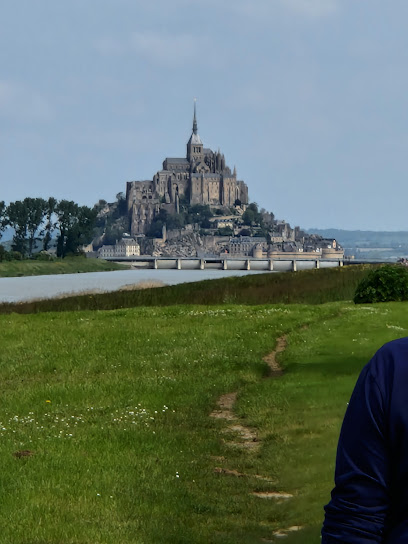
Le Mouton Blanc
Experience authentic French cuisine at Le Mouton Blanc in Mont-Saint-Michel—where tradition meets flavor in a historic setting.
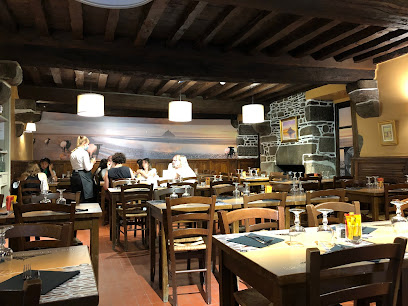
La Nouvelle Terrasse
Experience delightful French cuisine and delectable crepes at La Nouvelle Terrasse in Mont-Saint-Michel's stunning surroundings.

L'Antre Terre et Baie
Experience exquisite seafood dishes at L'Antre Terre et Baie near Mont Saint-Michel – where fresh flavors meet stunning views.
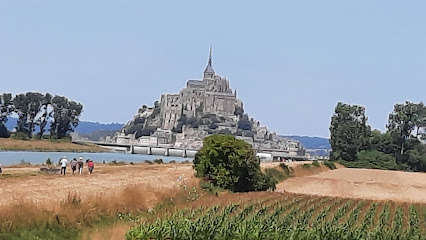
Markets, malls and hidden boutiques
Biscuiterie de la Baie du Mont St Michel
Discover the irresistible flavors of Biscuiterie de la Baie du Mont St Michel, a cookie lover's paradise in Pontorson, near the iconic Mont Saint-Michel.
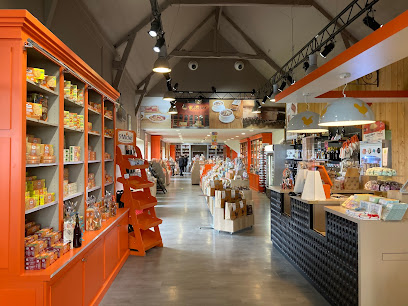
Maison Pèlerin
Experience the sweet side of France at Maison Pèlerin, your go-to confectionery near Mont Saint-Michel, offering exquisite handmade treats.
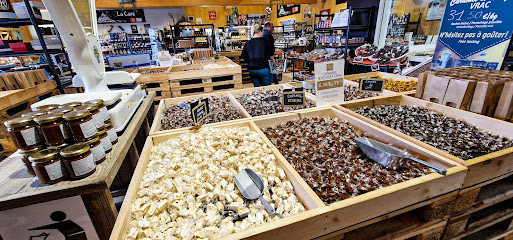
Produits Regionaux LEFRANC Farmshop
Experience the essence of Normandy at LEFRANC Farmshop, your go-to destination for regional groceries and local spirits in Pontorson.
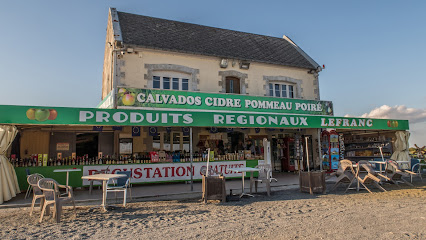
L'Epicerie de la Baie
Explore L'Epicerie de la Baie, a delightful gift shop near Mont Saint-Michel, known for its artisanal cider and delicious crepes.
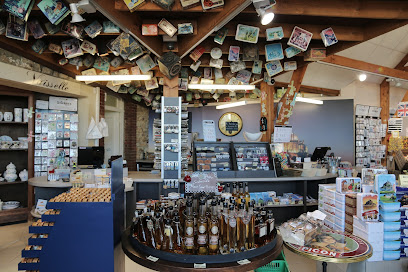
Les Galeries Du Mont-Saint Michel
Explore unique gifts and local treasures at Les Galeries Du Mont-Saint-Michel, the perfect stop for souvenirs near France's iconic landmark.
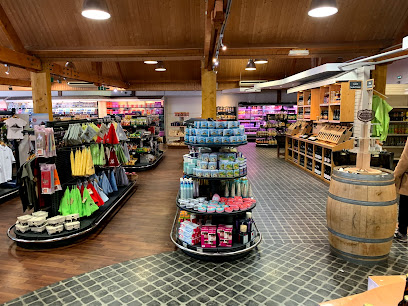
La Belle Normande
Discover the sweet treasures of La Belle Normande in Mont-Saint-Michel, where traditional pastries meet the charm of Normandy.
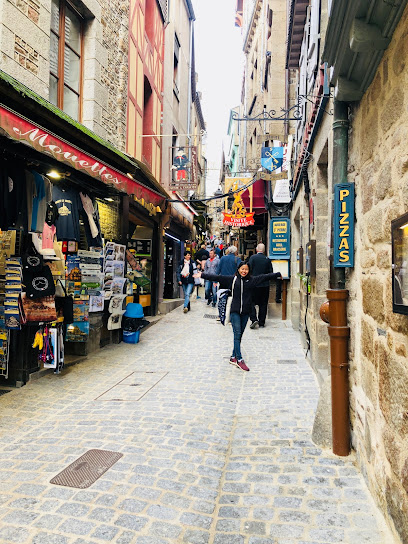
Atelier St Michel Beauvoir (BBSM)
Discover the flavors of Beauvoir at Atelier St Michel: a delightful grocery store and cake shop offering artisanal treats and a cozy dining experience.
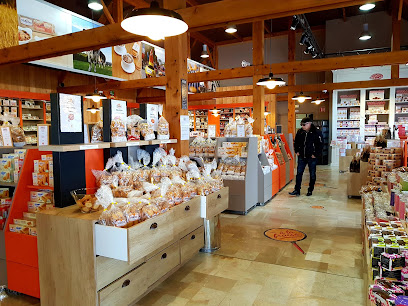
Armor-Lux
Experience the best of French fashion at Armor-Lux, Pontorson – where quality clothing and unique home goods await you.
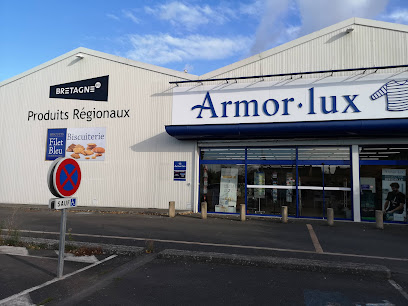
SAINT JAMES - Beauvoir
Discover stylish clothing and accessories at Saint James - Beauvoir, the perfect blend of modern trends and timeless elegance in the heart of France.
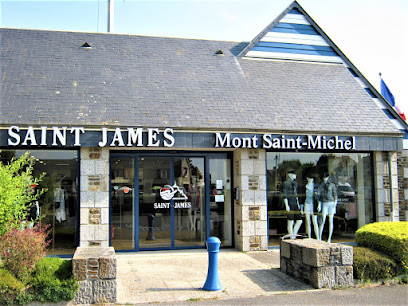
Maison Jehan
Discover authentic French flavors at Maison Jehan in Beauvoir, your destination for local delicacies and gourmet groceries near Mont Saint-Michel.
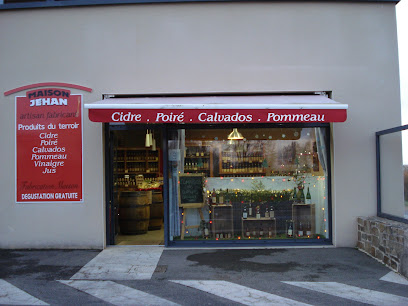
The King's Gate
Explore The King's Gate, a charming gift shop near Mont-Saint-Michel, offering unique souvenirs and local treasures to enhance your travel experience.
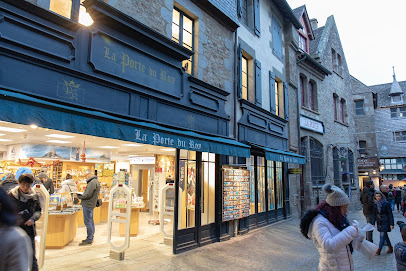
La Fée des Grèves
Discover unique souvenirs and local delicacies at La Fée des Grèves, the heart of Mont-Saint-Michel's shopping experience.
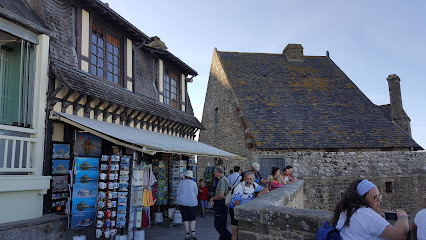
Librairie du Sanctuaire - librairie religieuse du Mont Saint Michel
Explore the Librairie du Sanctuaire at Mont Saint Michel for a unique blend of spirituality and literature in a breathtaking setting.
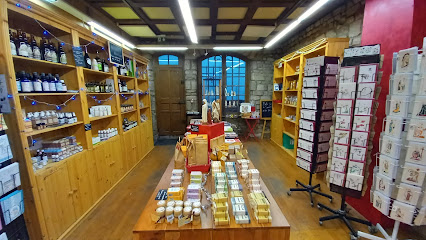
Au Pot de Cuivre
Discover the essence of Mont Saint-Michel at Au Pot de Cuivre, your go-to souvenir store for unique gifts and local treasures.
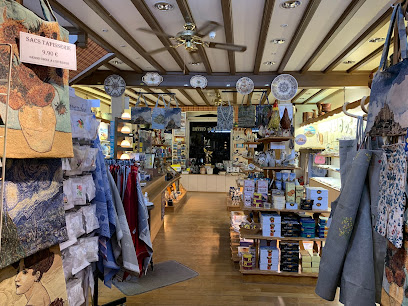
SARL SOLUCA
Explore SARL SOLUCA for exquisite souvenirs and gifts that embody the charm and history of Mont Saint-Michel.

Essential bars & hidden hideouts
Hotel La Mère Poulard
Experience the iconic flavors of France at Hotel La Mère Poulard, a culinary gem on the historic island of Mont-Saint-Michel.
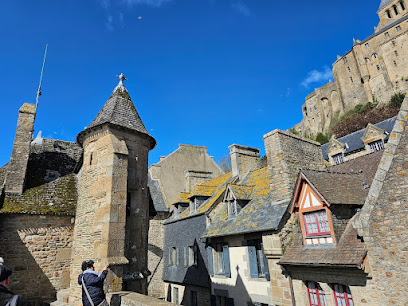
LES TERRASSES DE LA BAIE
Experience exquisite dining with breathtaking views at Les Terrasses de la Baie in Mont Saint-Michel, where culinary excellence meets stunning scenery.
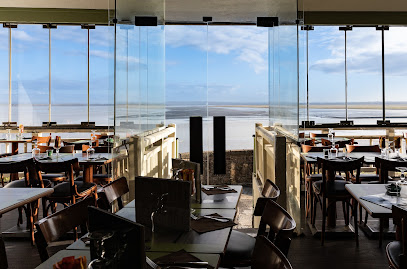
Restaurant La Confiance
Experience authentic French cuisine in the heart of Mont Saint-Michel at Restaurant La Confiance, where every meal is a journey through local flavors.
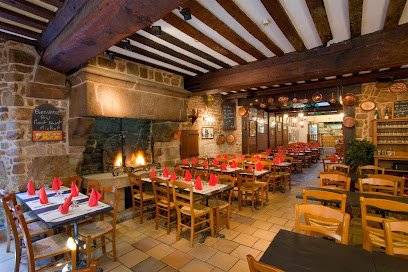
Restaurant La Salicorne ( ex: La Rôtisserie)
Experience authentic French cuisine at Restaurant La Salicorne, nestled in the breathtaking surroundings of Mont Saint-Michel.
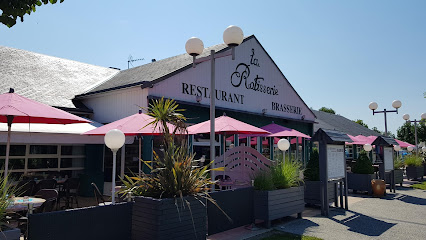
Auberge Saint Pierre
Explore Mont Saint-Michel from Auberge Saint Pierre, a charming bar, restaurant, and hotel nestled in the heart of this iconic UNESCO site.

Restaurant Le Pré Salé
Experience exquisite French dining at Restaurant Le Pré Salé, nestled near Mont Saint-Michel, where culinary traditions and stunning views meet.
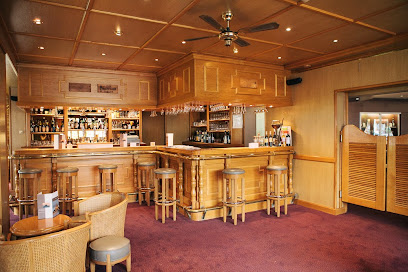
Le Mouton Blanc
Experience exquisite French cuisine with stunning views at Le Mouton Blanc, a must-visit restaurant in the heart of Mont-Saint-Michel.

L'Antre Terre et Baie
Experience the best of Normandy’s seafood at L'Antre Terre et Baie, a delightful restaurant near Mont Saint-Michel offering fresh local flavors.
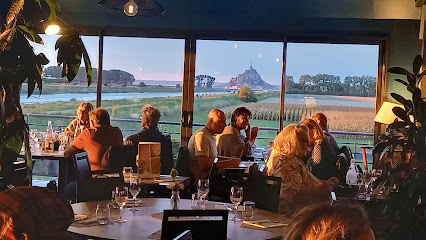
Le Tripot
Discover Le Tripot, a cozy bar and restaurant in Mont Saint-Michel, serving exquisite French cuisine and a delightful selection of drinks.
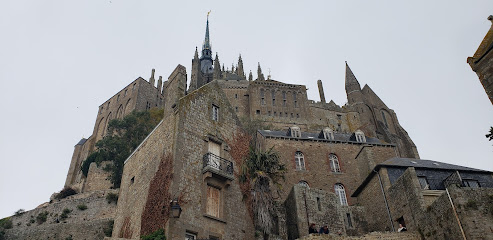
Bar des Amis PMU
Experience the charm of Beauvoir at Bar des Amis PMU, where locals and tourists gather for drinks, snacks, and warm connections.
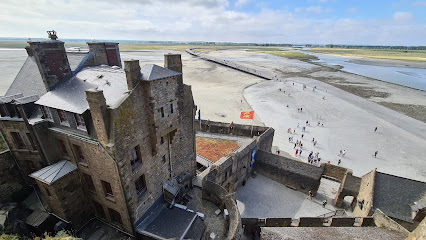
Au Pelerin
Savor the taste of authentic pizza at Au Pelerin, a charming restaurant in Mont-Saint-Michel, where history meets culinary delight.
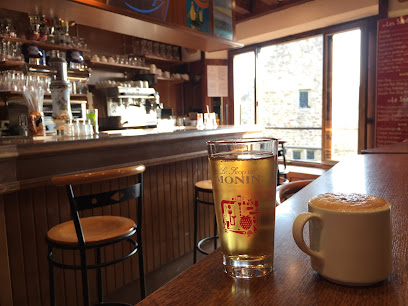
Le Chapeau Rouge
Discover the flavors of France at Le Chapeau Rouge, a charming restaurant in Mont Saint-Michel, famous for its delightful crepes and traditional dishes.
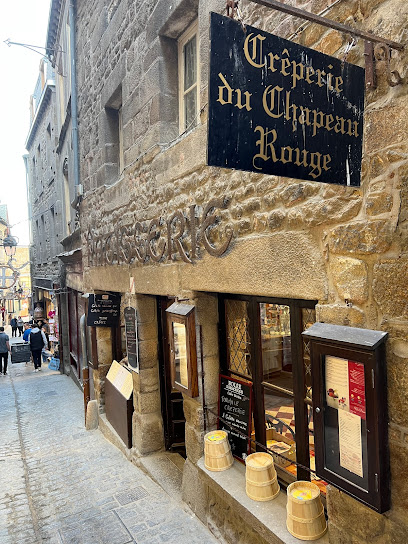
BROOKLYN
Experience the warmth of Brooklyn, a lively beer hall and hamburger restaurant in Pontorson, inviting food enthusiasts to savor exceptional flavors.
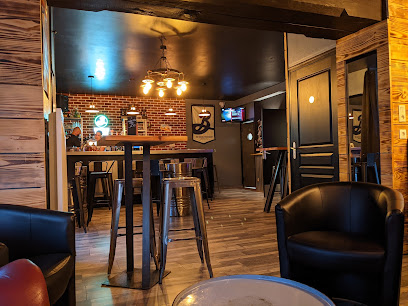
L'Hippocampe
Discover L'Hippocampe, a delightful restaurant in Mont Saint-Michel offering exquisite French and vegetarian cuisine amidst stunning landscapes.
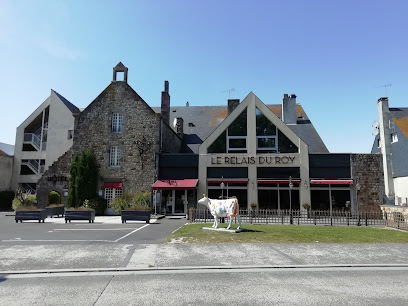
La Pause K’Fée
Experience the cozy charm of La Pause K’Fée, the perfect bar in Roz-sur-Couesnon for relaxation and local flavors.
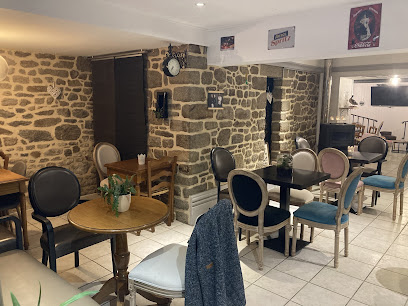
Local Phrases about Mont Saint-Michel Bay
-
- HelloBonjour
[Bon-zhoor] - GoodbyeAu revoir
[O reu-vwar] - YesOui
[Wee] - NoNon
[Non] - Please/You're welcomeS'il vous plaît/De rien
[Seel voo pleh/Dee ryen] - Thank youMerci
[Mehr-see] - Excuse me/SorryExcusez-moi/Désolé
[Ex-koo-zay mwa/Day-zo-lay] - How are you?Comment ça va?
[Koh-moh sah vah?] - Fine. And you?Bien. Et toi?
[Byen. Ay twah?] - Do you speak English?Parlez-vous anglais?
[Par-lay voo ahn-glay?] - I don't understandJe ne comprends pas
[Zhuh nuh kohm-prahnd pah]
- HelloBonjour
-
- I'd like to see the menu, pleaseJe voudrais voir la carte, s'il vous plaît
[Zhuh voo-dray vwar lah kart, seel voo pleh] - I don't eat meatJe ne mange pas de viande
[Zhuh nuh mahnj pah de vee-and] - Cheers!Santé!
[San-tay] - I would like to pay, pleaseJe voudrais payer, s'il vous plaît
[Zhuh voo-dray pay-ay, seel voo pleh]
- I'd like to see the menu, pleaseJe voudrais voir la carte, s'il vous plaît
-
- Help!Au secours!
[O se-coor!] - Go away!Allez-vous en!
[Ah-lay vooz ahn!] - Call the Police!Appelez la police!
[Ah-peh-lay lah po-leece!] - Call a doctor!Appelez un médecin!
[Ah-peh-lay uh meh-deh-sahn!] - I'm lostJe suis perdu(e)
[Zhuh swee pair-doo(e)] - I'm illJe suis malade
[Zhuh swee mah-lahd]
- Help!Au secours!
-
- I'd like to buy...Je voudrais acheter...
[Zhuh voo-dray ash-tay...] - I'm just lookingJe regarde juste
[Zhuh ruh-gard zhust] - How much is it?Combien ça coûte?
[Kohm-byen sah koot?] - That's too expensiveC'est trop cher
[Say troh shair] - Can you lower the price?Pouvez-vous baisser le prix?
[Poo-vez voo bay-say luh pree?]
- I'd like to buy...Je voudrais acheter...
-
- What time is it?Quelle heure est-il?
[Kell uhr eh-teel?] - It's one o'clockIl est une heure
[Eel eh oon uhr] - Half past (10)Dix et demi
[Dee eh duh-mee] - MorningMatin
[Mah-tan] - AfternoonAprès-midi
[Ah-pray mee-dee] - EveningSoir
[Swahr] - YesterdayHier
[Yehr] - TodayAujourd'hui
[Oh-zhoor-dwee] - TomorrowDemain
[Duh-man] - 1Un
[Ehn] - 2Deux
[Duh] - 3Trois
[Twa] - 4Quatre
[Kat-ruh] - 5Cinq
[Sank] - 6Six
[Sees] - 7Sept
[Set] - 8Huit
[Wee-et] - 9Neuf
[Nuhf] - 10Dix
[Dee]
- What time is it?Quelle heure est-il?
-
- Where's a/the...?Où est...?
[Oo eh...?] - What's the address?Quelle est l'adresse?
[Kell eh lah-dress?] - Can you show me (on the map)?Pouvez-vous me montrer (sur la carte)?
[Poo-vez voo muh mohn-tray (sir lah kart)?] - When's the next (bus)?Quand est le prochain (bus)?
[Kahnd eh luh proh-shan (bus)?] - A ticket (to ....)Un billet (pour ...)
[Ehn bee-yay (poor ...)]
- Where's a/the...?Où est...?
History of Mont Saint-Michel Bay
-
Mont Saint-Michel Bay has a rich history that dates back to ancient times. Originally known as Mont Tombe, the site was used by the Celts as a place of worship. In the 8th century, the Archangel Michael appeared to Aubert, the bishop of Avranches, instructing him to build a church on the rocky island. By 708 AD, the first sanctuary was constructed, marking the beginning of Mont Saint-Michel's religious significance.
-
During the medieval period, Mont Saint-Michel became a major pilgrimage site. In the 10th century, Benedictine monks settled on the island, and the abbey began to flourish. The construction of the Romanesque abbey church started in the 11th century and continued over several centuries. The island's strategic location made it a stronghold, and its fortifications were enhanced to withstand sieges during the Hundred Years' War. Mont Saint-Michel successfully resisted English attacks and became a symbol of French national pride.
-
The French Revolution brought significant changes to Mont Saint-Michel. The abbey was closed, and the monks were expelled. The island was then transformed into a prison, housing political prisoners and opponents of the revolution. This period of decline lasted until the mid-19th century when influential figures like Victor Hugo campaigned for the preservation of Mont Saint-Michel’s architectural and historical heritage.
-
In the late 19th century, efforts to restore Mont Saint-Michel began in earnest. The prison was closed, and the abbey was classified as a historic monument in 1874. Extensive restoration work was undertaken to repair and preserve the site. In 1979, Mont Saint-Michel and its bay were designated a UNESCO World Heritage Site, recognizing its cultural and historical significance. The restoration continues to this day, ensuring the preservation of this iconic landmark for future generations.
-
Mont Saint-Michel remains a significant cultural and religious site. The abbey continues to be a place of pilgrimage, attracting thousands of visitors annually. Its unique blend of Gothic and Romanesque architecture, combined with the picturesque setting of the tidal island, makes it one of France's most visited tourist destinations. The island's medieval streets, museums, and shops offer a glimpse into its storied past, making it a living testament to the region's rich history and culture.
Mont Saint-Michel Bay Essentials
-
Mont Saint-Michel Bay is located in Normandy, France. The nearest major airport is Rennes-Saint-Jacques Airport (RNS), about 70 kilometers away. From Paris, you can take a train to Pontorson-Mont-Saint-Michel station, which is around 9 kilometers from the Bay. Shuttle buses run regularly from the train station to Mont Saint-Michel. Alternatively, you can rent a car and drive, which takes approximately 4 hours from Paris.
-
Once you arrive, getting around Mont Saint-Michel itself is mostly done on foot due to its small size and narrow streets. For exploring the surrounding areas, consider renting a bicycle or taking a guided tour. Shuttle buses are also available to take you from the parking area to the entrance of Mont Saint-Michel. Taxis are rare but can be found in nearby towns like Pontorson.
-
The official currency is the Euro (EUR). Credit cards are widely accepted in most hotels, restaurants, and shops around Mont Saint-Michel. However, it is advisable to carry some cash for smaller establishments and local markets. ATMs are available but can be limited, so plan accordingly.
-
Mont Saint-Michel Bay is generally a safe destination for tourists. Petty theft such as pickpocketing can occur, especially in crowded areas, so keep an eye on your belongings. Avoid walking alone at night in secluded areas. There are no specific high-crime neighborhoods targeting tourists, but staying vigilant is always recommended.
-
In case of an emergency, dial 112 for immediate assistance. The local gendarmerie (police) station and medical facilities are available in the nearby town of Pontorson. It is advisable to have travel insurance that covers medical emergencies. Pharmacies are available where you can purchase over-the-counter medications for minor health issues.
-
Fashion: Do wear comfortable walking shoes, as the terrain can be uneven. Avoid high heels or flimsy sandals. Religion: Do respect the abbey's sacred nature; dress modestly and speak quietly. Public Transport: Do use shuttle buses to get from the parking area to Mont Saint-Michel. Don't bring large luggage, as storage options are limited. Greetings: Do greet people with a simple 'Bonjour' (Hello) and perhaps a light handshake. Eating & Drinking: Do try local delicacies such as moules frites (mussels with fries) and galettes. Don't rush your meals; dining is an essential part of French culture.
-
For an authentic experience, try to visit Mont Saint-Michel early in the morning or late in the afternoon to avoid the peak tourist crowds. Engage with local guides who can provide historical context that enriches your visit. Don't miss the chance to witness the tidal changes, as they are spectacular and a defining feature of Mont Saint-Michel Bay. Lastly, consider exploring the nearby salt marshes and sampling the locally-produced lamb, known for its unique flavor.
Nearby Cities to Mont Saint-Michel Bay
-
Things To Do in Rennes
-
Things To Do in St. Clement
-
Things To Do in Gorey
-
Things To Do in St. Helier
-
Things To Do in St. Aubin
-
Things To Do in Trinity
-
Things To Do in St. Brelade
-
Things To Do in St. Lawrence
-
Things To Do in St. Peter
-
Things To Do in St. Ouen
-
Things To Do in St. Anne
-
Things To Do in St. Martin
-
Things To Do in Forest
-
Things To Do in St. Peter Port
-
Things To Do in St. Andrew













